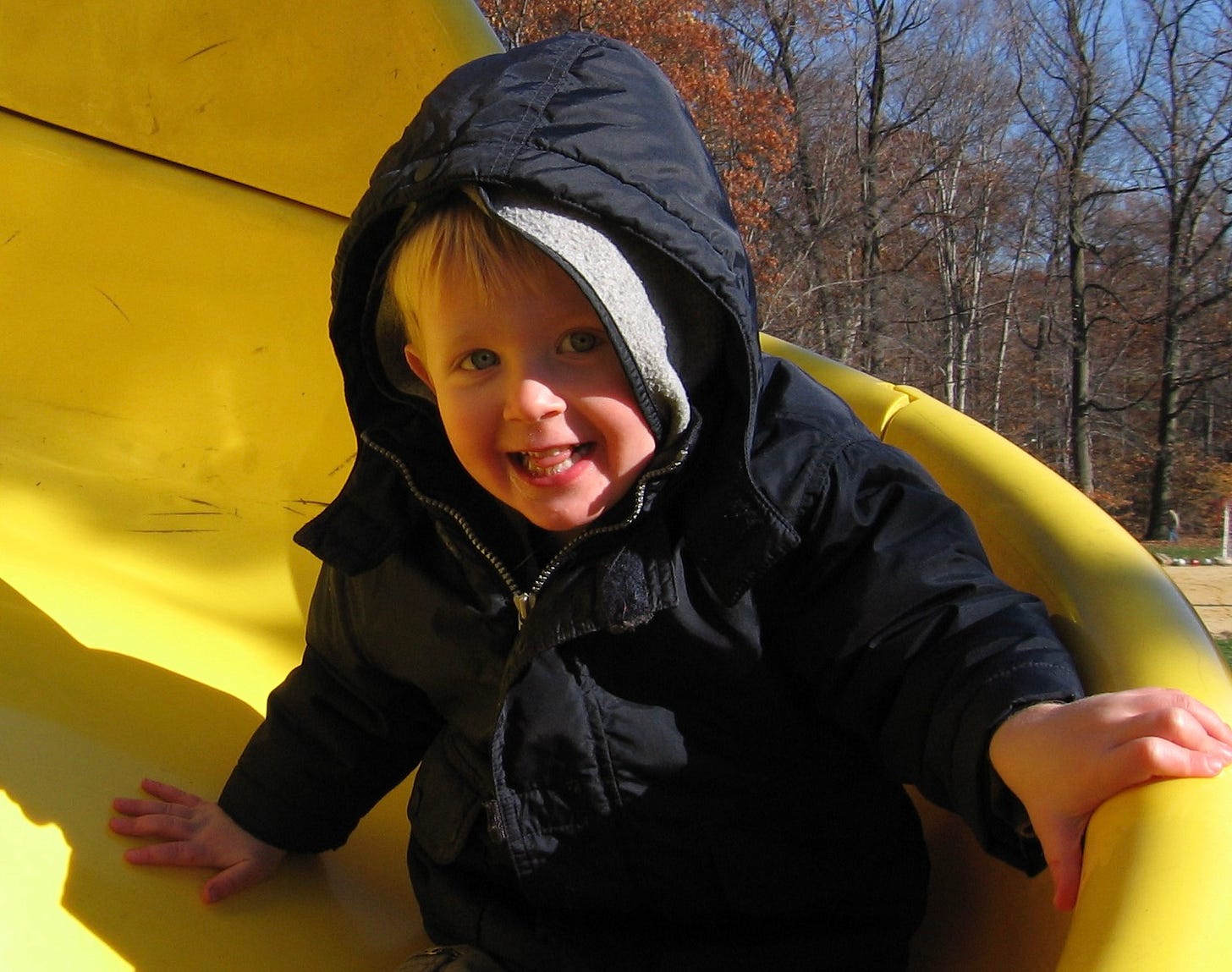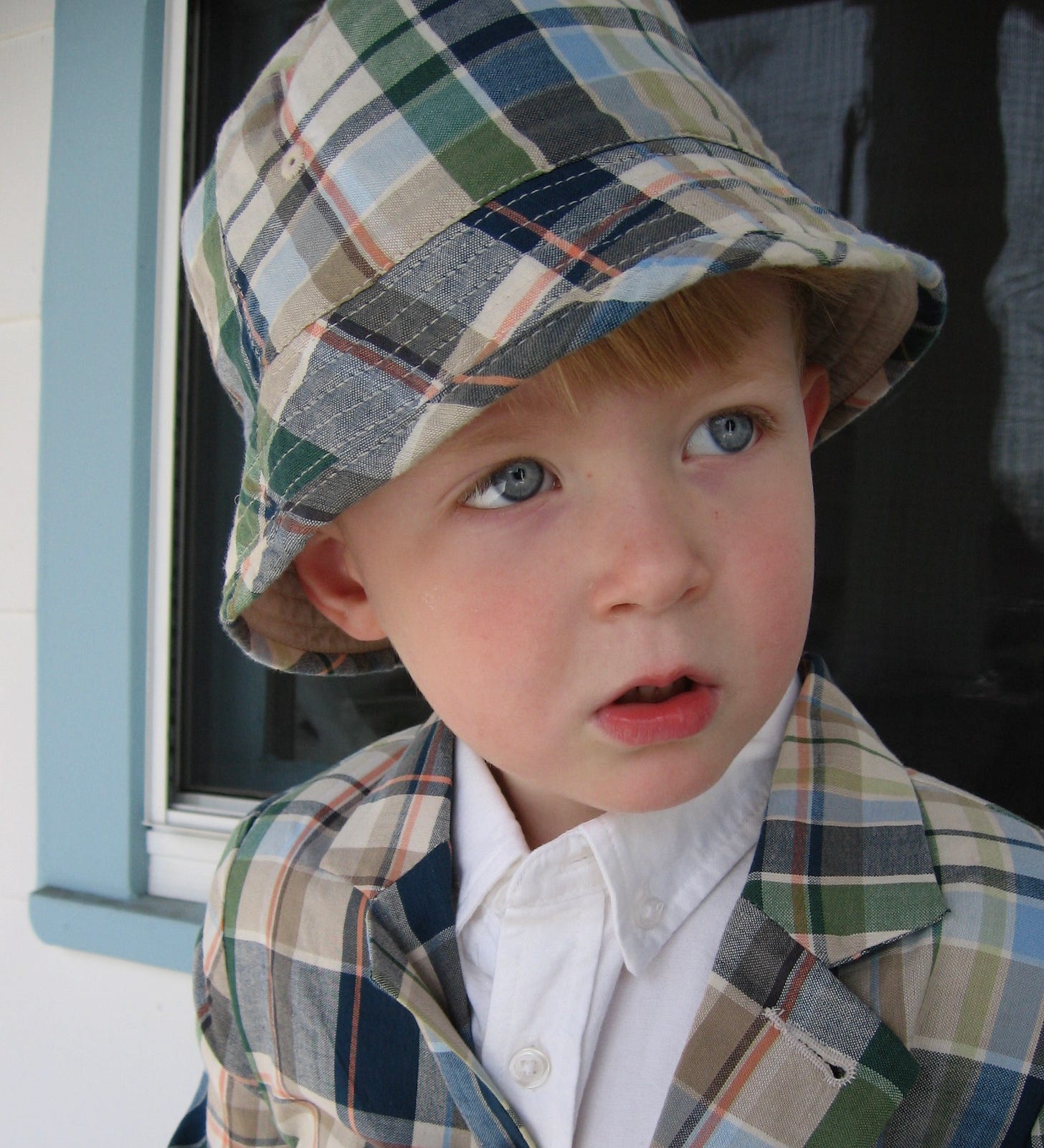I started this newsletter as a way of documenting the post-high school life of my autistic son, Ian. Finding the right place for my younger son was a full time job last year. After talking with consultants, filling out government paperwork, listening to webinars, writing legal briefs with lawyers, attending school meetings, and touring new programs, I placed Ian in a great program that supports and challenges him in just the right way.
Because Ian is in a good place right now, I’m taking a breather from transition efforts both in real life and on this newsletter. In real life, I’m cranking up work. I’m taking freelance writing assignments and working on my side hustles. I just completed my substitute teaching certificate and will help out at the local high school to balance out all my time in front of a computer.
I’m also going to switch gears a bit on this newsletter and look backward, instead of forward. I’m going to talk about lessons that I’ve learned about autism and parenting over the past twenty years. Today’s topic is something that autistic parents all know and assure the younger parents on the playground — they get better.
As I write about autism, I should acknowledge that I have a small sample size — two kids — which may not be enough for a university conference, but I spent more time with them than any university researcher does with a thousand subjects. My boys are my case studies. The only autism books that I’ve found useful over the years were either written by an autistic person or their parents.
Autism has expanded and changed our understanding of disability. First of all, autism is not just one thing. Autistic children exhibit a range of different challenges, with little overlap between kids. Some kids can't sit still, others hate to move around. Some don’t talk; others talk too much. Some avoid bright light and loud noises; others seek out those strong feelings. Some love academics; others loathe it.
A while ago, researchers gave up trying to come up with names for all the different forms of autism and decided it was better to group all the types together under one umbrella term - autism. Basically if you have a social and communication challenge (talk too much or too little or communicate oddly) and tend to obsess on a certain subjects, then they you have autism. Researchers are trying to include sensory issues to that definition now, but that’s not officially part of the definition yet.
The umbrella term makes sense in some ways. Clearly all the autistic people have neurological issues, whether they have high needs or low needs. It also helps politically to advocate for all autistic kids simultaneously, rather than just one form of autism. But it does make it difficult for me to talk to talk about What Worked for Ian (WWI). Ian’s type of autism might not resemble other kids’ autism types, so disclaimers must be put in place: your milage may vary.
The second reason that autism has changed up our understanding of disability is that autistic kids get better. While a blind child may never see and a child in a wheelchair may never walk, an autistic five-year old will be much, much more functional at 15, and even more so at 25. Autistic children get better.
What does it mean to “get better?” Improvement differs from kid to kid, of course. Some kids will be better enough to go to MIT, but will still have problems socializing at parties. Others will learn a few words and stop biting their arm, which is just as HUGE and important and life changing as the MIT kid. Improvement is to be celebrated no matter the end point.
While all kids improve, some kids do improve more than others, and it’s not entirely clear why, but the research hints at three significant variables: IQ, mothers, and therapy.
About 31 percent of autistic kids have a below average IQ, and the rest have a borderline to superior IQ. Studies show that the intelligence starting point is a huge factor in the improvement scale. Smarter kids start off more similar to typical children and can blend into a mainstream school better. Of course, assessing IQ in autistic people is a very tricky situation. (I wrote about the difficulties in measuring intelligences in autistic people in the May newsletter.)
Another massive asset for kids with autism is their parents, specially their mothers. Kids who have a better relationship with their mothers do better. Kids with highly educated mothers do better. Improvement from autism requires someone who can drive the kid to therapist and advocate for them in schools. If the mother has a happy, relaxed conversation with her autistic child in the car and at the dinner table, that child will do better. Sometimes that conversation might be more of a monologue at times, but it’s still useful. In the next week or two, I’ll tell the story of how I taught Ian to talk.
The last factor in autistic improvement is therapy. While ABA might not be politically correct in some circles right now, there is no doubt that hours and hours of intense interactions between a young child and an adult helps them to rewire their brain. No parent can do this alone, so outside therapy is critical to supplement what the parent does at the dinner table and the playground.
If autistic people improve, then ability and disability is no longer a binary option. Autistic people will grow to be less disabled, if given the right kinds of help. While improvement is a great and hopeful thing, it also opens a can of worms, because all that help is extremely time consuming and expensive and politically fraught. Who is going to pay for it? At what point do you stop therapy? Can the therapy itself be damaging? But this newsletter is long enough; I’ll get to those problems another time.
However, the good news is that neuroplasticity is a real thing. Brains do improve. So, big hugs to the parents of the three-year old, who is running around in circles in the playground and doesn’t seem to understand you. It gets better! Also, your kid is awesome regardless of where they end up! Also, your quirky family is going to be more fun than you imagine!
Next week, I’ll talk about what we did (and didn’t do) with Ian when he was really young.
Related Links
I wrote about neuroplasticity in my main newsletter last year.






Thanks for this, it landed in my inbox at the perfect time. I am one of those parents of a younger child (nearly 5) and it’s really tough. We see progress and celebrate it, but it’s still hard most of the time.
Thanks for the encouragement, I’m looking forward to the newsletters about Ian’s younger days, thank you 😊
Hi - good series of articles. I have to admit I'm from the person first generation and wonder why you write in a disability first manner? good luck with the transition. you might also want to take a look at our newletter (Science in Autism Treatment, co-edited with David Celeberti) where we try to deal with a number of the issues you are tackling now and into the future.